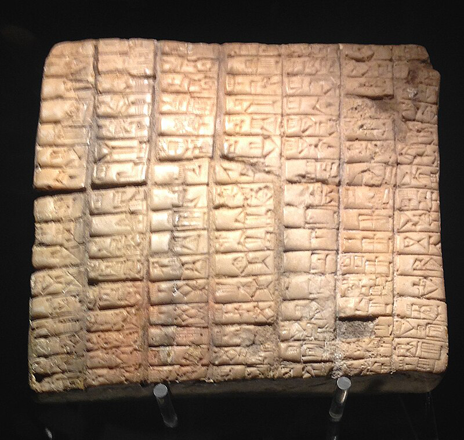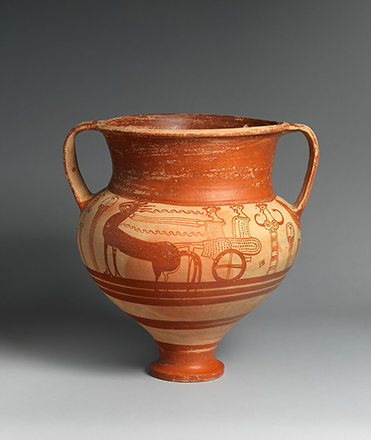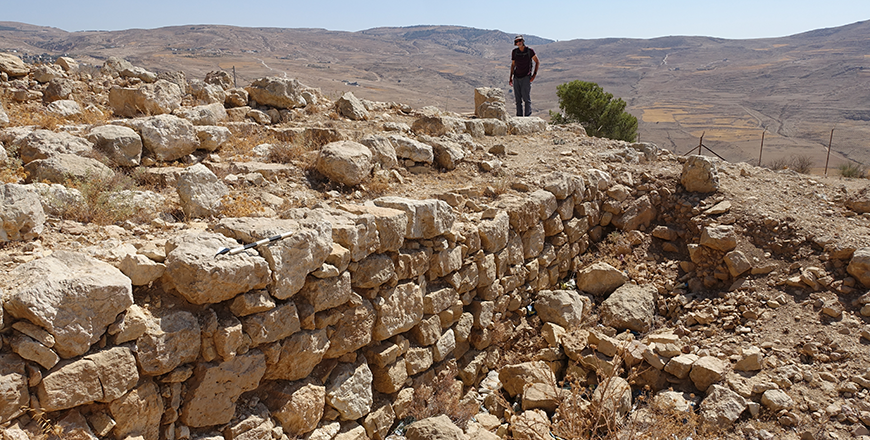You are here
Ebla tablets, ancient texts unveil Syria - Cyprus copper trade in antiquity
By Saeb Rawashdeh - Aug 12,2024 - Last updated at Aug 12,2024

An Ebla tablet from the Bronze Age (Photo of Davide Mauro)
AMMAN — Ebla tablets found in 1975 by the Italian archaeologist Paolo Matthiae represent a collection of 1,800 clay tablets, 4,700 fragments, and thousands of minor chips uncovered in the city of Ebla in Syria. These tablets cover the period between 2,500 BC and 2,250 BC. Tell Mardikh is a modern name for the site and it was one of the earliest states in the Levant and the centre of ancient, centralised civilization.
Tablets from Ebla in the later 3rd millennium mention copper imported from Alashiya (generally agreed to denote Cyprus), and Mari's early 2nd millennium texts also mention Alashiyan copper.
"In the 14th century BC texts from Amarna mention a total of some 1000 talents of copper sent to the Pharaoh by the king of Alashiya. The Uluburun wreck at the end of the century contains over 350 oxhide ingots of Cypriot copper. Copper oxhide ingots of Cypriot origin from the 12th-11th century date have also been found in Sardinia. A fragment of an ingot from a 13th-century hoard at Oberwilflingen in central Europe," highlighted Professor Emeritus Susan Sherratt from The University of Sheffield, adding that there is every reason to suppose that significant Cypriot copper production continued into the Iron Age, together with the Cypriot production of copper-based artifacts.
Moreover, lead isotope analysis to determine the sources of copper in nuggets and other artifacts has led to a lot of confusion. Much of this probably stems from the likelihood that copper from different sources, often recycled, was used to produce these. Cyprus was certainly not the only region producing copper in the Bronze and Iron Ages, but without doubt, it was - and remained - a significant one, she underlined. Noting that this is shown by the fact that the Latin word cuprum was almost certainly derived from the Greek name for Cyprus.
"Goods moving from the Levant to southern Europe at various times from the Early Bronze Age to the Early Iron Age include metals and metal objects [copper not only from Cyprus but also from Faynan, tin ultimately from further east and gold probably ultimately from Nubia], precious stones [such as lapis lazuli, also ultimately from further east], ivory [both elephant and hippopotamus - the mouth of the Yarkon River was an important source of hippopotamus ivory, in addition to Egypt], glass [sometimes in the form of glass ingots] and faience objects, textiles [including purple-dyed], olive oil and wine, incense and some pottery [Phoenician especially from the end of the 10th century onwards]," Sherratt elaborated.
Goods moving in the other direction include, particularly importantly, silver (from the Aegean from the mid-3rd millennium, and later from Sardinia and Iberia probably accompanied by tin), woollen textiles (from the Aegean area especially in the 2nd millennium), bronze objects from Italy and the northern Adriatic from the late 13th century and later from the West Mediterranean, Baltic amber sporadically from the later 3rd millennium onwards (channelled either down the Danube or via southern Italy/Sicily and the Aegean), Aegean pottery (Cretan in the early 2nd millennium in small quantities, Greek mainland in the 14th-13th centuries both for its own sake and as containers for perfumed oil and unguents, from Euboea and Attica in the Iron Age), a very small amount of Sardinian pottery in the 13th-12th centuries. Also, olive oil and wine, and possibly leather and timber, Sherratt underlined.
"It would be a mistake to look for any obvious rationality in what went from where to where in the highly complex exchange systems, especially of the later Bronze and Iron Ages," Sherratt said, adding that a number of the goods that travelled were available in both the Levant and southern Europe but clever marketing (e.g. 'branding' marked by container design) probably made certain types and qualities of goods more desirable than others, as sometimes did the appeal of the exotic.
Related Articles
AMMAN — During the Bronze Age, Cyprus played a role of cultural and economic hub, as well as a bridge between the Levant and southern Europe
AMMAN — During the Late Bronze Age, economic interconnectedness characterised relations between Egyptian dynasties, Hittite state and
AMMAN — The scholar Piotr Bienkowski studied archaeology at Liverpool University (BA and PhD) before he got involved in Jordanian Iron Age s














